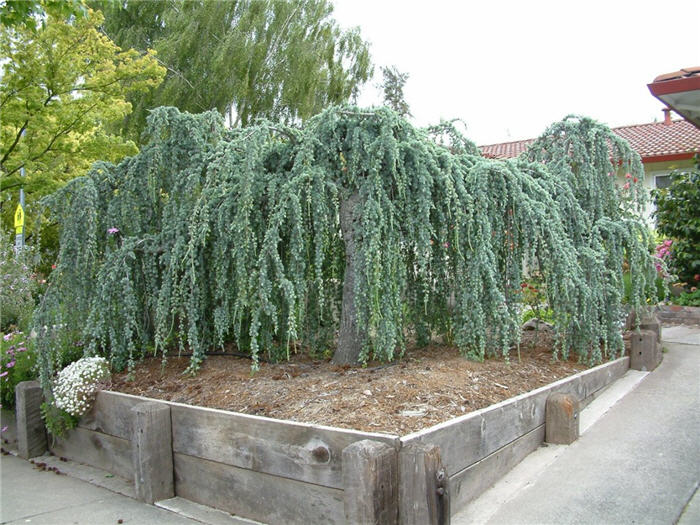| Botanical Name: Cedrus atlantica 'Glauca Pendula' | |
| Common Name: Weeping Blue Atlas Cedar |

-
Anatomy
-
Culture
-
Design
Plant Type
Tree, Conifer
Height Range
6-12'
Flower Color
n/a
Flower Season
n/a
Leaf Color
Blue Green, Grey Green
Bark Color
Brown, Grey
Fruit Color
Brown, Purple
Fruit Season
Persistent
Sun
Full
Water
Low, Medium
Growth Rate
Slow
Soil Type
Clay, Loam, Rocky
Soil Condition
Average, Rich, Poor, Well-drained, Dry
Soil pH
Neutral
Adverse Factors
n/a
Design Styles
English Cottage, Formal, Japanese, Mediterranean, Ranch, Spanish
Accenting Features
Silhouette, Specimen, Unusual Shape
Seasonal Interest
Winter, Spring, Summer, Fall
Location Uses
Entry, Shrub Border, Foundation, Raised Planter, Walls / Fences
Special Uses
Screen, Topiary
Attracts Wildlife
n/a
Information by: Stephanie Duer
Photographer: Steve Mullany
Photographer: Steve Mullany
-
Description
-
Notes
A drooping, weeping form makes this evergreen conifer a dramatic addition to a landscape. Pendant branchets drape and display icy-blue to steel grey needles. A slow grower with spreading branches 15 to 20 feet wide; height of plant depends on how high it is staked; initially may need support. Cedars have lovely cones, emerging bluish when young and aging a reddish brown.
Best grown in deep, well-drained, acidic loams in full sun. Drought tolerant once established. Some sources list it as being hardy to USDA Zone 6, but there are many large, well established specimens in the valley, though maybe not a good choice for the benches. Tolerant of heat and drought. The greatest problem with this tree is that it is usually planted much too close to a building, walk, or driveway, and so has to be butchered to be gotten around.